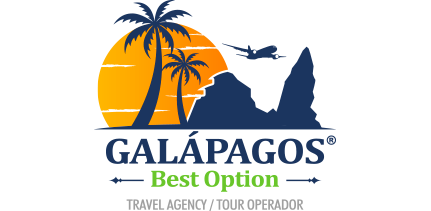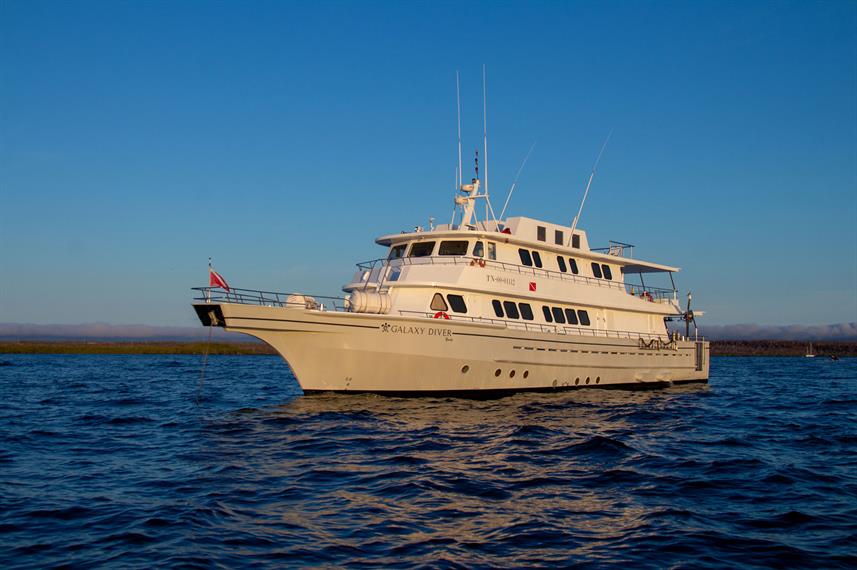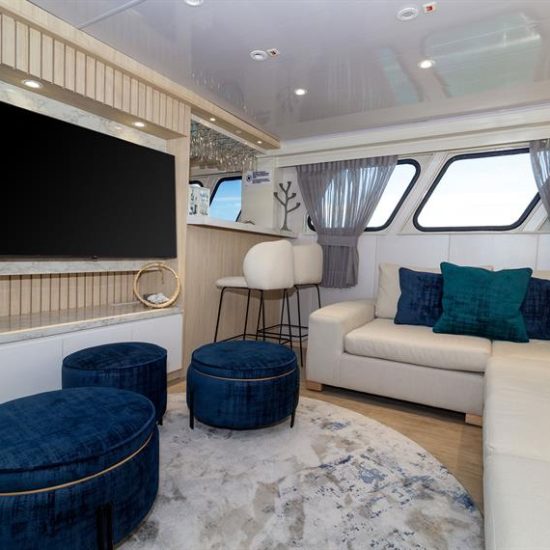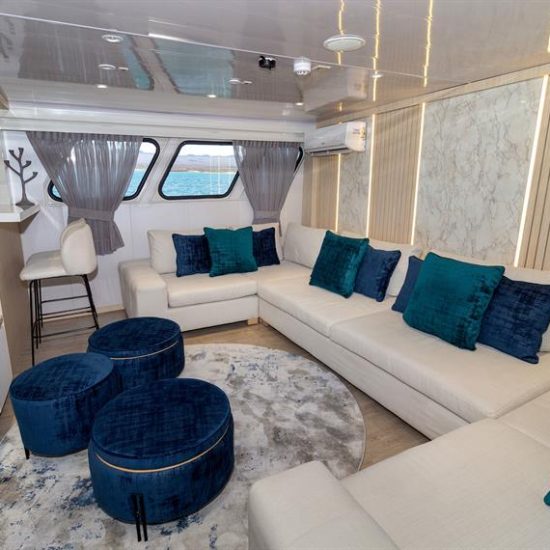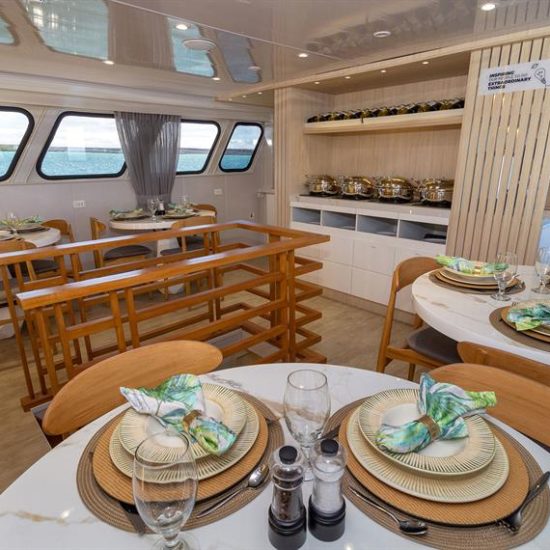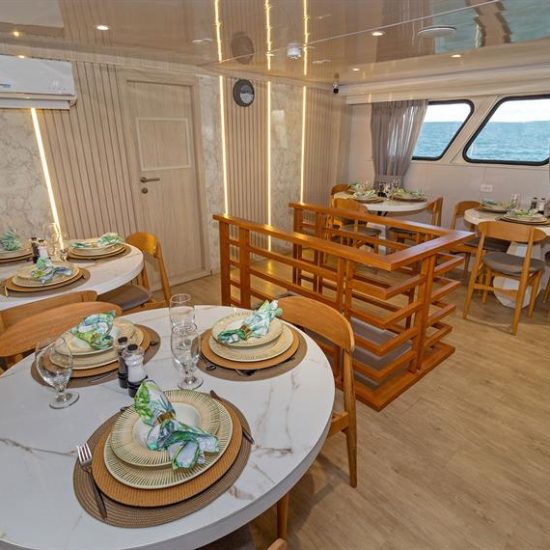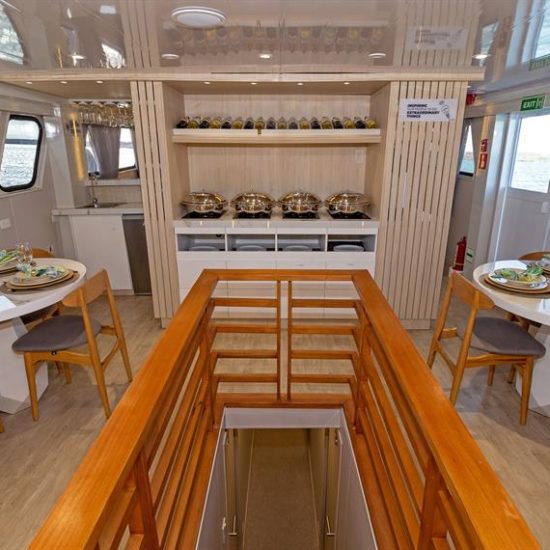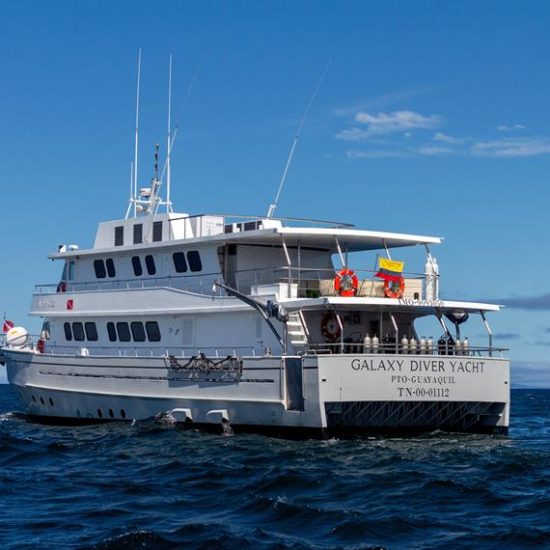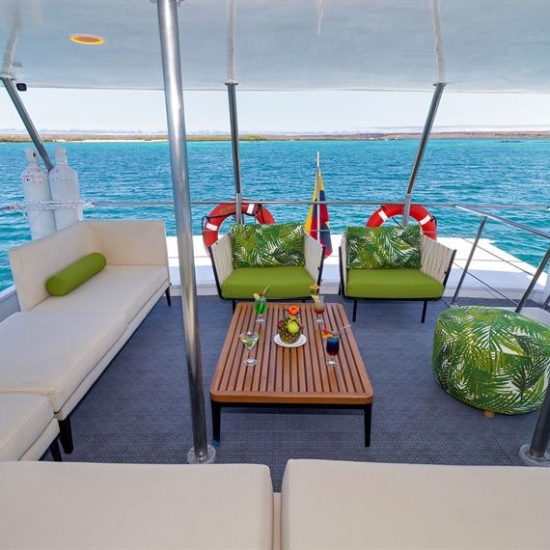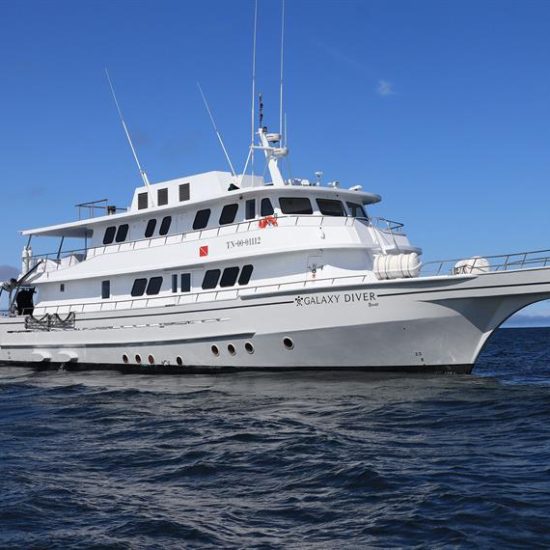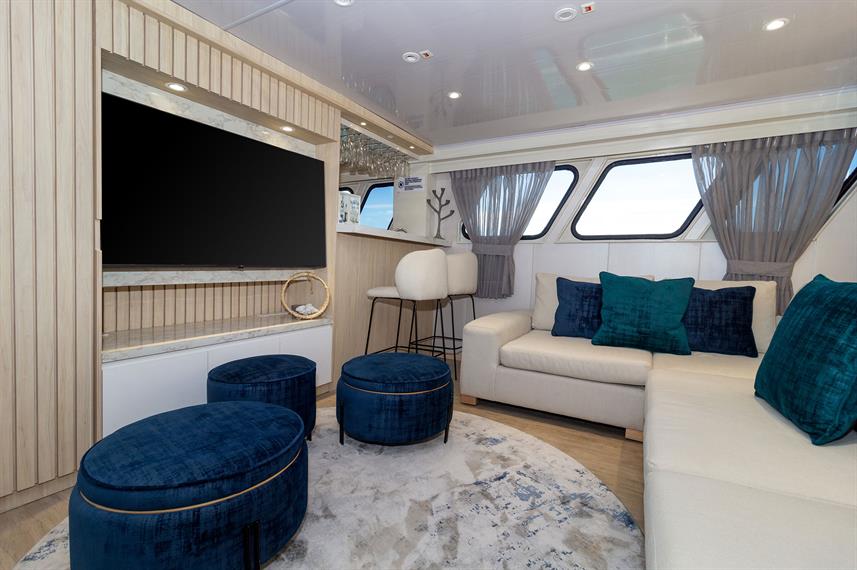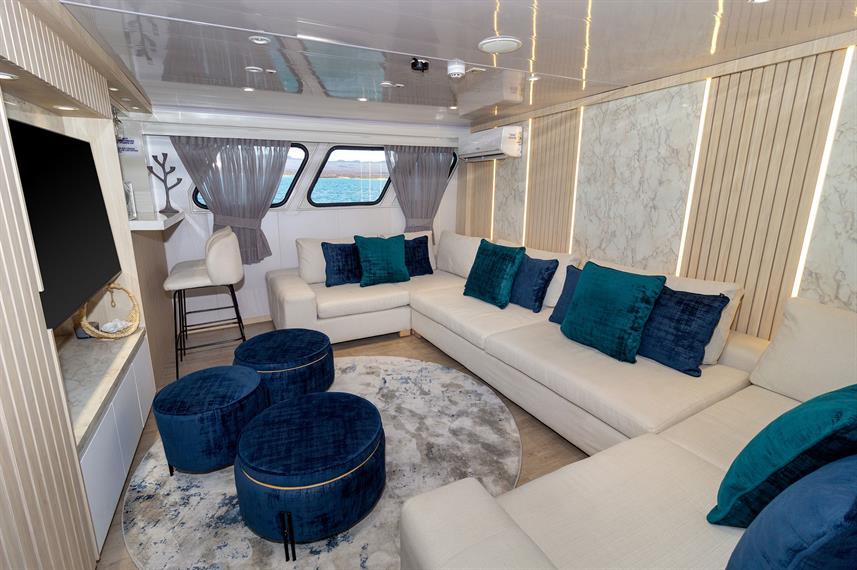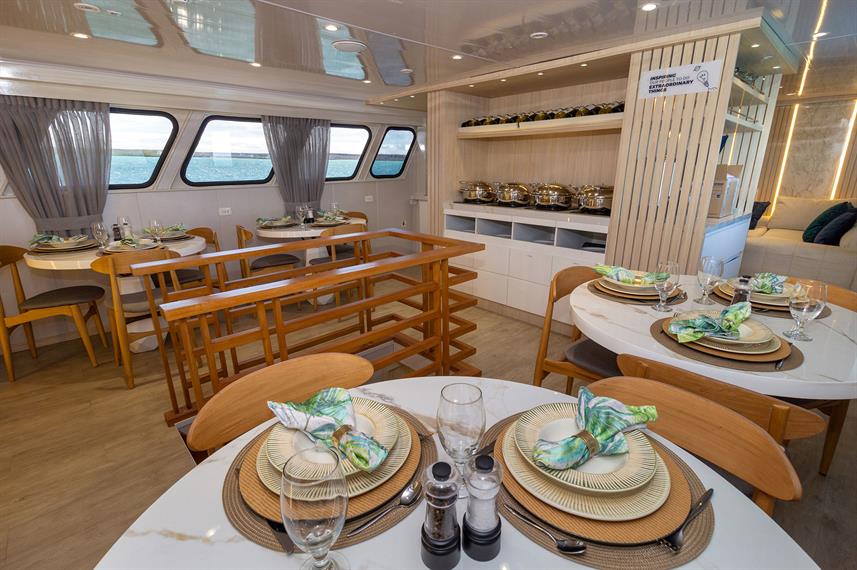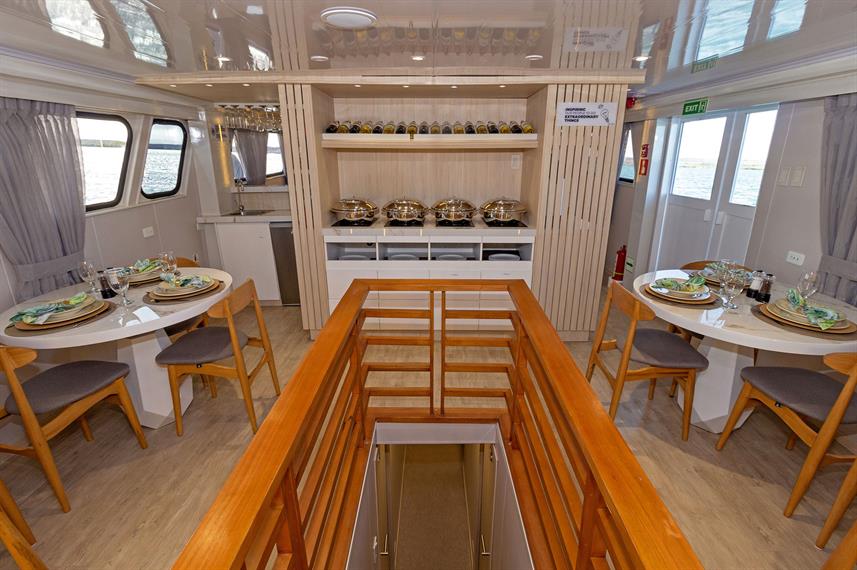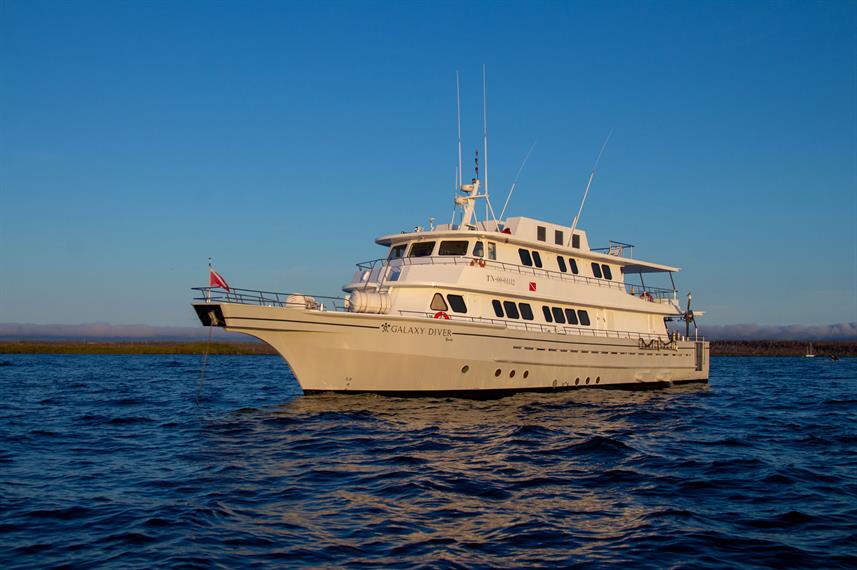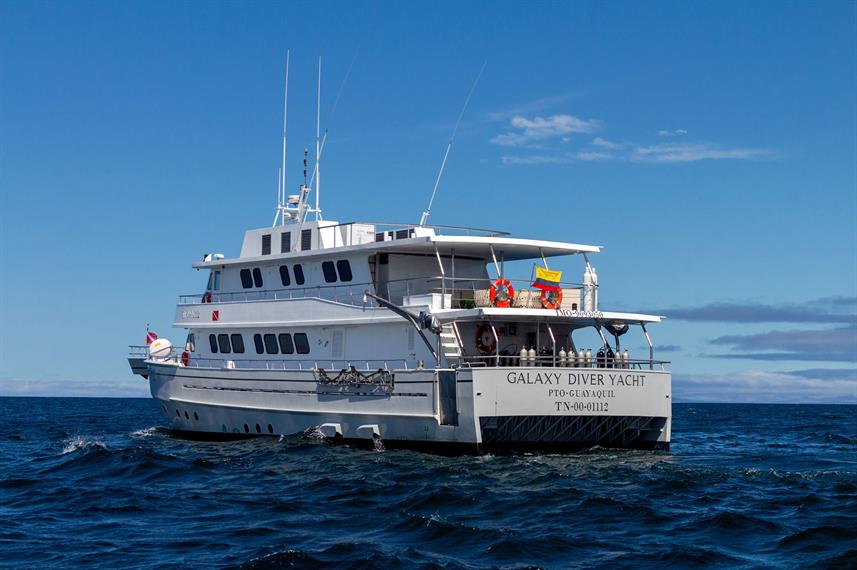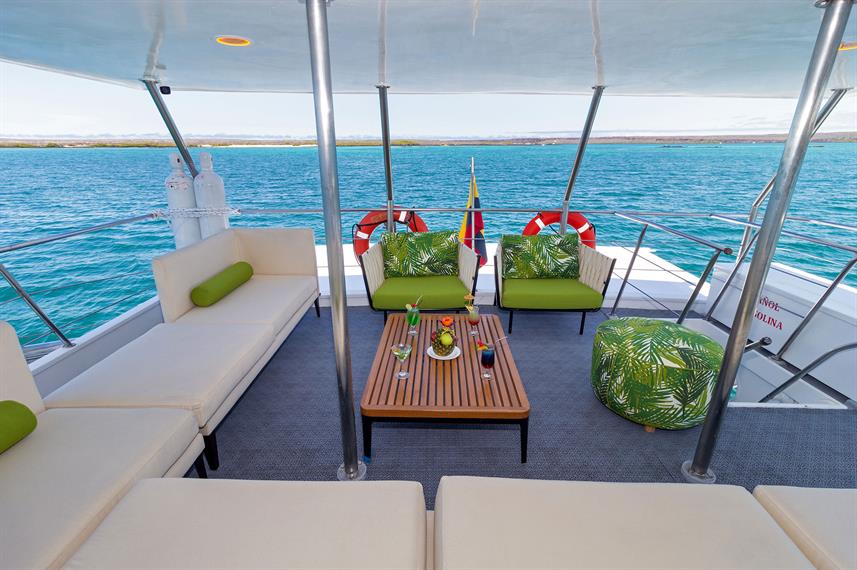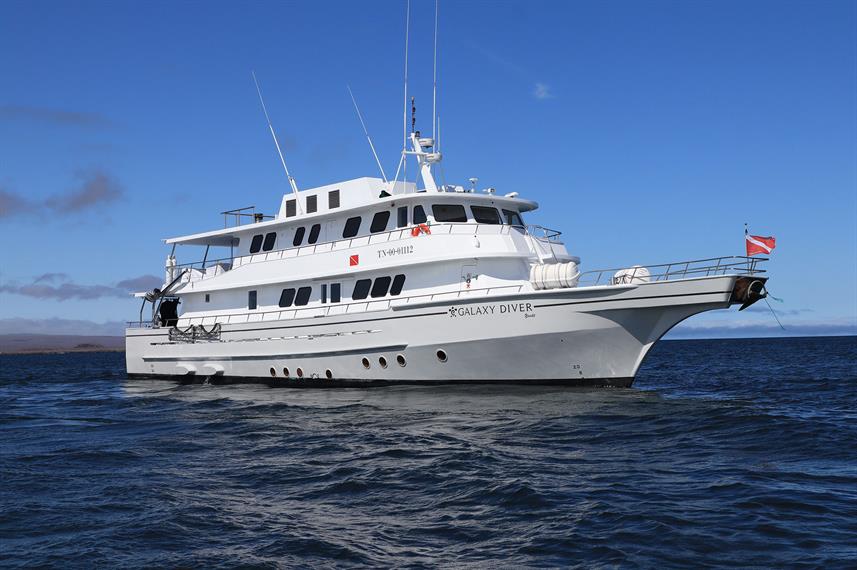Galaxy Diver Liveaboard Dive Boat
RESERVE THIS CRUISE
Starting Price Per Person of Naturalist Cruise : $2.939,00 USD, all taxes are included.
Starting Price Per Person of Diving Cruise : $3.749,00 USD, all taxes are included.
Please confirm availability for your desired itinerary by contacting us at:
info@galapagosbestoption.com / sales@galapagosbestoption.com / Whatsapp +593 967742545
PAYMENT POLICY
To book and confirm any tour, we must receive 100% of the total amount prior to the tour as follows:
50% due at the time of booking
50% due 30 days before the date of your tour
CANCELLATIONS
Any last minute cancellations or changes by the customer may incur a fee to be imposed by Galapagos Best Option SA.
If for any reason a passenger is not present at the time of their flight they will be considered a no show and will not be subject to any refund by the agency.
Please read our full Cancellation and Refund Policy.
The Galapagos National Park has the right to make any changes to the itinerary due to natural disasters or scientific research projects.
-
Destination
8 DAYS CRUISES
DIVING CRUISESDay 1 – Wednesday / - Arrival at the Gateway to the Enchanting Galapagos Islands
Welcome to the Galapagos Islands, where today marks the beginning of our diving adventure. Our journey starts with our arrival at Seymour Airport, also known as Baltra Airport, located on the island of Baltra. As we step off the plane, we'll be greeted by our guide and the friendly staff of the Galaxy Diver, who will help us with our luggage and transfer us to the Galaxy Diver.
Then, we'll enjoy a delicious lunch and settle into our cabins. But before we dive into the waters, it's important to note that there are strict guidelines for passengers to the archipelago due to the area's designation as a national park. These guidelines help preserve the delicate environment of the Galapagos Islands, ensuring that we can continue to enjoy the beauty of this unique ecosystem for years to come.
After all, we have the safety drill and check dive to try all the equipment by having our first immersion among the wonders of the Galapagos Islands. We'll explore the pristine waters and encounter incredible marine life that can't be found anywhere else. It's sure to be an unforgettable experience that will leave us with memories to last a lifetime.
- Meals included: Lunch and Dinner
- Difficulty: None
- Immersions PM" 1 check dive
Day 2 – Thursday / Carrion Point and en route to Wolf Island - A Diver's Paradise
As the sun rises on our first day of diving aboard, we can feel the excitement building for what's in store at our first dive site, Punta Carrion. We gather our gear, and with the guidance of our expert dive master instructors, we dive into the crystal-clear waters surrounding the stunning Santa Cruz Island.
Descending deeper into the underwater world of Punta Carrion, we'll be immediately mesmerized by the incredible visibility and the abundance of marine life that surrounds us—schools of hammerhead and whale sharks, this last one available between June to December. At the same time, playful sea lions dart in and out of the rocky underwater cliffs.
We learn more about the vivid and colorful world of tropical fish as we continue our exploration, including groups of surgeonfish, angelfish, and parrotfish. Luckily, we can even find a few secretive seahorses hidden in the reef's crevices.
Later, we joyfully discuss our underwater excursions. At the same time, the onboard cook makes a lovely lunch when we return to the vessel. Finally, in the late afternoon, we'll begin our 14 hours of navigation through the Galapagos Sea to Wolf Island.
- Meals included: Breakfast, Lunch, and Dinner
- Difficulty: Moderate
- Immersions AM: 2
Day 3 – Friday: Shark Bay, La Banana, La Ventana Islet, and El Derrumbe - A Magnificent Marine Expedition
Today, we'll have an exciting diving adventure as we discover the hidden riches of this enchanted location.
Our first stop is the breathtaking Shark Bay, where we can spot the majestic Galapagos shark, eagle ray, and sea lion will meet you as you plunge into the ocean's depths. These magnificent creatures are a sight to behold, with exquisite movements that will take your breath away.
Following a thrilling morning dive, we'll travel to La Banana to continue our journey and discover the Galapagos Islands' abundant marine life. In addition, we'll be able to see playful sea lions in their native environment, darting and whirling about us with elegant, engaging, and mesmerizing beauty.
As the day unfolds, we'll make our way to La Ventana Islet and El Derrumbe, two diving locations known for their diverse marine life. Go into the fascinating world of colorful fish, turtles, and sea stars as they welcome you into their natural home. The beauty and magic of the undersea environment will wow you as you explore these hidden jewels.
As we wrap up our diving day, take a minute to enjoy the beautiful sunset while reflecting on the incredible experiences of the day. The Galapagos Islands are indeed a treasure trove of natural beauty, and we are privileged to accompany you on this magnificent voyage. Therefore, be ready to immerse yourself in a world of wonder and go on a once-in-a-lifetime experience!
- Meals included: Breakfast, Lunch, and Dinner
- Difficulty: Moderate
- Immersions AM: 2
- Immersions PM: 2
Day 4 – Saturday: El Arenal and The Darwin's Arch - A Journey of Discovery
Today, we'll take you to El Arenal. This magnificent location will leave you spellbound by the natural beauty of the Galapagos Islands. A diving site considered one of the best diving points in the world. This site is close to Darwin's Arch and offers moderate to strong currents with depths ranging from 46 to 121 ft and visibility from 40 to 80 ft. As you dive deeper into the sea, you'll be greeted by the impressive Galapagos underwater biodiversity.
We'll then move on to Darwin's Tower, commonly known as Darwin's Arch, one of the most iconic dive sites in the world. This awe-inspiring location is a must-visit for any avid diver. We're thrilled to share this incredible experience with you. As you dive into the deep blue waters, a world of vibrant coral, schools of colorful fish, and the majestic beauty of the hammerhead shark will be waiting for you with their imposing presence and graceful movements.
The thrill of diving at Darwin's Tower is indescribable, and you'll be amazed by the sheer beauty of this underwater wonderland.
- Meals included: Breakfast, Lunch, and Dinner
- Difficulty: Moderate
- Immersions AM: 2
- Immersions PM: 2
Day 5 – Sunday: El Arenal, El Derrumbe, and Shark Bay - A Marine Adventure
Our first dive site of the day is El Arenal. As we explore the vibrant coral reefs and discover the diverse marine life, we'll have the chance to encounter an incredible array of species. Some of them could be dolphins commonly sighted feeding on schools of fish, hammerhead sharks, whale sharks, rays, Galapagos sharks, and even tiger sharks and killer whales. But the beauty of El Arenal isn't just in its impressive marine life; the geological formations are also a sight to behold.
After an exhilarating morning dive, we'll move on to El Derrumbe, where we'll discover the fascinating marine diversity of the Galapagos Islands. This site offers a unique diving experience with its underwater cliffs and caves. You'll encounter many species, including green turtles, sea lions, and eagle rays. But what makes this site truly special is the presence of bull sharks, one of the few places in the world where you can dive with them in shallow waters.
Our last dive of the day takes us to Shark Bay, where we'll explore the hidden treasures of the Galapagos Islands. This site is famous for its incredible diversity of marine life, including the Galapagos shark, eagle ray, and sea lion. But what makes this site truly unique is the presence of whale sharks that visit the Galapagos Islands every year from July to November. It's a rare opportunity to witness these gentle giants, and we're honored to share this experience with you.
- Meals included: Breakfast, Lunch, and Dinner
- Difficulty: Moderate to Advance
- Immersions AM: 2
- Immersions PM: 2
Day 6 – Monday: Douglas Cape and Vicente Roca Point - A Journey into the Unknown
As we continue our journey through the pristine waters of the Galapagos Islands onboard, we have some incredible dives planned for you on this sixth day in the deeper sea of the Galapagos Islands.
We start our day by diving at Douglas Cape, where you can observe the marine iguanas feeding on algae underwater. These graceful creatures spend time basking in the sun to warm up before diving into the sea for about 20 minutes to feed. Watching them glide through the water is a truly unforgettable experience. The seas surrounding Douglas Cape are teeming with unique marine life, such as the famous Galapagos marine iguana, red-lipped batfish, fur seals, Galapagos penguins, and flightless cormorants.
Our following dive site is Vicente Roca Point, located on the northwest coast of Isabela Island. The abundance of colorful corals and gorgonians make this site one of the best in the Galapagos Islands for enjoying macro life, such as seahorses, different species of nudibranchs, toadfish, and even the elusive Mola Alexandrini (mola mola), the largest bony fish in the world. You may also encounter penguins and flying cormorants, green turtles, and, if lucky, a cat shark. The stunning coral formations and the impressive array of marine life at Vicente Roca Point will take your breath away.
- Meals included: Breakfast, Lunch, and Dinner
- Difficulty: Moderate
- Immersions AM: 1
- Immersions PM: 1
Day 7 – Tuesday: Cousin Rock and Santa Cruz Highlands - An Adventure to Remember
This morning we'll have the opportunity to do our last dive at Cousin Rock—one of the most colorful dive sites in the archipelago. The vibrant coral walls and gorgonians create a stunning backdrop for encounters with seahorses, reef fish, and various nudibranchs. Keep an eye out for the curious coral hawks as they dart around the reef. As we dive deeper, we might glimpse a school of eagle rays gracefully gliding by or spot a white-tip shark resting in a crevice. If we're lucky, we might even see mobulas and schools of barracudas. Finally, the playful sea lions will appear and invite us to join their underwater games.
After lunch, we disembark and head for a reserve in the Santa Cruz Highlands. Here, we have the unique opportunity to witness the iconic Galapagos Tortoise in its natural habitat. Walking through the lush vegetation, we might even spot some of the other residents of the highlands, like the elusive Galapagos Rail or the bright Vermilion Flycatcher.
- Meals included: Breakfast, Lunch, and Dinner
- Difficulty: Moderate
- Immersions AM: 2
- Immersions PM: None
Day 8 – Wednesday: Twin Craters and Baltra Airport - A Farewell to the Enchanting Galapagos Islands
Our journey sadly ends today, but first, we'll visit the Twin Craters, where you can witness the incredible volcanic landscape of the Galapagos Islands. After a week of unforgettable experiences, it is time to bid farewell to this enchanting land. As you'll be transferred to Baltra Airport, take the memories of a lifetime and the magic of the Galapagos Islands.
DIVING EXPERIENCE REQUIRED
All people or divers who confirm the spaces on the GALAXY DIVER Yacht need a minimun of 50 Dives of experience and have a diving license (PADI)
PRICE : 4.949,00 USD P.P.
ITINERARY B
NATURALIST 8 DAYS
Day 1:
AM: BALTRA AIRPORT - Departure to the Galapagos Islands, Arrive at Baltra airport, where our naturalist guide of the National Park will be waiting for you.
PM: BACHAS BEACH - Bachas gets its name from the remains of two large barges (mispronounced by locals as “bachas”) left by the Americans during WWII. At low tide, you can still see the iron skeletons of the barges buried in the white sand. From November to May, this place is also one of the most important sea turtle nesting grounds in the entire Galapagos islands. There are also several small saltwater lagoons where we often see flamingoes, herons, and other aquatic birds. Snorkel: After the walk, you will have the option to swim or snorkel from the beach. The area is rich in some of the most common fish species of the Galapagos, but you can also find white-tipped reef sharks and rays.
- Highlights: American flamingoes, white-cheeked pintails, sandpipers, lava gulls, and blue-footed boobies.Trail: 1,6 km / 1 mi
- Meals: Lunch, Dinner
Day 2:
AM: SULLIVAN BAY - This hike is a journey into understanding the birth of these volcanic islands. You will walk in a very well-preserved flow of Pahoehoe lava, which will give you endless opportunities to see the delicate textures of these types of lava which only appear in a few places throughout the world. At first sight, the barren landscape looks completely deprived of life, but look carefully for pioneer plants, lava lizards, and small birds. By the shore, you can find penguins, pelicans, and oystercatchers.
Snorkel: You will have the option to swim or snorkel from a coral sand beach or from the dinghies. Getting underwater is like traveling to another world: if the land is almost lifeless, the sea is teeming with life, including large schools of fish, Galapagos penguins, reef sharks, turtles, and rays.
- Highlights: Pahoehoe lava, Galapagos penguins, oystercatchers, Galapagos hawks.
- Trail: 2,2 km / 1,4 mi
PM: RABIDA - Rábida is a small island famous for its reddish lava rocks (rich in iron) which give it a unique look. The beach is also red and hosts a small colony of sea lions. There is a small saltwater lagoon where we will see ducks and stilts and sometimes flamingoes. The trail will take you inland to get beautiful views of the beach and the lagoon. Look for Darwin finches, flycatchers, and mockingbirds. In the cliffs along the coast, you can find Nazca & blue-footed boobies, brown noddy, herons, and the two species of sea lions: Galapagos and fur seals.
Snorkel: You can snorkel from the beach and explore a sheltered rocky area, which is excellent for fish, sea lions, and reef sharks. Look at the high diversity of small invertebrates attached to the vertical walls.
- Highlights: Red-sand beach, Galapagos sea lions, Galapagos hawks, flycatchers, Darwin finches, Galapagos mockingbirds, ducks, flamingoes.
- Trail: 2 km / 1,2 mi
- Meals: Breakfast, Lunch, Dinner
Day 3:
AM: ESPINOZA POINT - Located at the base of an imposing volcano (the most active in the Galapagos islands) this site is one of the jewels of the Galapagos National Park. As soon as you disembark you will be surrounded by hundreds of marine iguanas, as this is the largest colony for the species. Sea lions bask on the beaches while their pups play in tide pools. Along the shore, you will see flightless cormorants, which are restricted to the western areas of the archipelago. Surrounded by cold plankton-rich waters, Punta Espinosa is home to an array of species, including herons, pelicans, oystercatchers, sea turtles, shorebirds,s and many more. Look up in the mangroves as Galapagos hawks often perch to look for their prey.
Snorkel: The nutrient-rich waters around Punta Espinosa attract great numbers and diversity of fish and sea turtles. Seaweeds are also abundant, making this place the best for seeing marine iguanas feeding underwater. Following a cormorant underwater as it chases fish through the reef is one of the most amazing snorkel experiences you may have on your trip.
- Highlights: Galapagos hawks, marine iguanas, flightless cormorants, penguins, sea turtles, sea lions, herons, oystercatchers, shorebirds, sally light-foot crabs.
- Trail: 1,6 km / 1 mi
PM: TAGUS COVE - Tagus Cove is one of the places Charles Darwin visited during his exploration of the Galapagos islands. A trail will take you through dry Palo Santo forests where you can see Darwin finches and mockingbirds. You will get great views of Darwin’s Lake and the large volcanos of northern Isabela. A boat tour along the shore will give you chances to see penguins, cormorants, marine iguanas, and a very unique species: the Galapagos martin, a small endemic bird that is one of the most endangered species on the island.
Snorkel: The nutrient-rich waters around Tagus Cove attract a lot of sea turtles and a great diversity of fish, but also penguins, who feast on large schools of anchovies. It is common to see cormorants underwater as they chase fish through the reef.
- Highlights: Galapagos hawks, marine iguanas, flightless cormorants, herons, penguins, sea turtles, and sea stars.
- Trail: 2,6 km / 1,6 mi
- Meals: Breakfast, Lunch, Dinner
Day 4:
AM: URBINA BAY - This place is known for the dramatic uplifting that happened here during the 1950s. A large portion of the coast was pushed up, exposing many hectares of previously submerged land. Look carefully along the trail and you will find small shells and corals, proof that the area was underwater more than sixty years ago. The trail will give the opportunity to see land iguanas and, during certain seasons, giant tortoises. Galapagos hawks nest in the area and are often seen flying or perched on the trees.
Snorkel: You can snorkel from the beach to see sea turtles, cormorants, and penguins. Fish are also abundant in the area.
- Highlights: Galapagos hawks, land iguanas, Galapagos hawks, Galapagos mockingbirds, Darwin finches, and flycatchers.
- Trail: Short trail: 1,2 km / 0,7 mi. Long Trail: 3,0 km / 1,8 mi
PM: ELIZABETH BAY - Elizabeth Bay is a beautiful sheltered bay surrounded by large mangroves and barren lava fields. There is no trail here so you will take a dinghy tour to explore many channels, pools, and caves teeming with life. This is one of the best locations on the islands to see Galapagos penguins, but don’t expect to see thousands of them, as the entire population of the islands is only about 3.000 of them. Flightless cormorants also nest in the area and blue-footed boobies and pelicans often fish in these shallow and rich waters. Rays and sea turtles are also very abundant.
- Highlights: Galapagos hawks, sea turtles, rays, Galapagos penguins, flightless cormorants, and herons.
- Meals: Breakfast, Lunch, Dinner
Day 5:
AM: TINTORERAS - Located very close to Puerto Villamil, the main town in Isabela, this small islet is surprisingly rich in wildlife. There are extensive colonies of marine iguanas and sea lions and you will see rays and sea turtles in the shallow channels. Here it’s easy to see reef sharks, locally known as “Tintoreras”. Herons and gulls are also common and if you are lucky, you might see a Galapagos penguin, as there are a few individuals in the area.
- Highlights: Reef sharks, Galapagos penguins, marine iguanas, sea lions, Galapagos mockingbirds, Darwin finches, herons, and gulls.
- Trail: 1,1 km / 0,7 mi
PM: WETLANDS - The wetlands of Villamil include a large area of lagoons, channels, and coves located near the town. The saltwater lagoons are surrounded by mangroves and are rich in bird species, sheltering species such as American flamingos, white-cheeked pintails, gallinules, stilts, herons, and other shorebirds. The main trail starts at the town and ends at the Tortoise Breeding Center
- Highlights: American flamingoes, gallinules, ducks, stilts, herons.
- Trail: 1,2 km / 0,8 mi
- Meals: Breakfast, Lunch, Dinner
Day 6:
AM: POST OFFICE BAY - Floreana is famous for the tales of German settlers and the baroness during the late 1920s and 30s. Assassinations, disappearances, and other unsolved mysteries are the ingredients of this fascinating story. Post office bay was often used by whalers to anchor their ships and go up to the highlands to get fresh water and tortoises. Most boats visiting the Galapagos had to come to this place sooner or later, so a system of mail was established more than 200 years ago: a barrel near the beach became the way to leave messages to other ships and also to the outside world. This mail system is still in use and will allow you to send postcards from the Galapagos to the outside world. Aside from a small beautiful beach and a lava tunnel, the area is great for dinghy tours to look for sea lions, green sea turtles, shorebirds, small sharks, and, with some luck, Galapagos penguins.
Snorkel: There is great snorkeling from the beach, as you can see lots of sea turtles, rays, a great diversity of fish, and if you are really lucky, Galapagos penguins,
- Highlights: Sea Lions, sea turtles, finches, shorebirds, marine iguanas, and penguins.
- Trail: 0,7 m / 0,4 mi
PM: CORMORANT POINT - Punta Cormorant is located in the north of Floreana and it is known for its large coastal lagoon with American flamingoes, white-cheeked pintails, black-necked stilts, and other shorebirds. There is a beautiful white sand beach which is an important nesting ground for green sea turtles where we can also see rays and reef sharks. In the last years, small groups of blue-footed boobies have started to breed right by the trail. This is also a great trail to look at endemic plants.
- Highlights: American flamingo, blue-footed booby, frigatebirds, tropicbirds, Galapagos shearwaters, sea lions, sea turtle nesting site, finches, shorebirds, coral-sand beach.
- Trail: 1,6 km / 1 mi
- Meals: Breakfast, Lunch, Dinner
Day 7:
AM: HIGHLANDS - Either if you do this visit starting from Baltra or from Puerto Ayora, a bus will take you to the highlands stopping along the way at one of the reserves to visit the lush highland forests where you will look for the Galapagos Giant tortoises in their natural environment. This is the best place in the Galapagos to see these gentle giants (reaching over 300 kg / 600 pounds!) casually grazing and resting in freshwater ponds. This is also home to a great diversity of birds rarely found in the lowlands, including finches (tree, woodpecker, and vegetarian finches), flycatchers, and several species of water birds. You will visit a lava tunnel (depending on the itinerary) and learn how these extraordinary formations were created by ancient volcanic eruptions.
- Highlights: Giant tortoises, Darwin finches, barn owls, white-cheeked pintails, Galapagos flycatchers, Lava tunnels.
- Trail: 1-1,5 km / 0,6-0,9 mi
PM: CHARLES DARWIN STATION - The Charles Darwin Station is a nonprofit organization that has been working for decades together with the Galapagos National Park to preserve the biodiversity of these unique islands. During this visit, you will learn about the projects that both institutions carry together to protect the native species and eradicate the invasive ones which are threatening the Galapagos environment. One of the most important and emblematic projects has been reproducing giant tortoises in captivity. The visit is mostly outdoors in a beautiful dry native forest with giant cacti and many other interesting native plants. It is also a fantastic place to find several endemic Darwin finches, as well as flycatchers and mockingbirds.
- Highlights: Galapagos giant tortoise & land iguanas breeding program, Darwin finches, Galapagos mockingbirds, Galapagos flycatchers, yellow warblers.
- Trail: 2 km / 1,2 mi
- Meals: Breakfast, Lunch, Dinner
Day 8:
AM: SEYMOUR - This island is home to large colonies of both magnificent and great frigatebirds and you can see them displaying their red balloons to attract a female. Blue-footed boobies nest in the ground and perform their famous dance in the open areas, while swallow-tailed gulls perch on the cliff edges. Land iguanas are common inland while their marine cousins bask in the rocks by the sea, close to sea lions, which often like to body surf in the waves.
- Highlights: Galapagos sea lions, blue-footed boobies, magnificent & great frigatebirds, land & marine iguanas, swallow-tailed gulls, shearwaters, and Darwin finches.
- Trail: 1,4 km / 0,8 mi
Transfer to the Airport and flight to the Mainland
PRICE : 4.399,00 USD P.P.
- Airport Transfers
- Naturalist Guide Certified by the Galapagos National Park
- 2 Dive Instructor of Galapagos Marine Reserve
- Full Meals
- Coffee, Tea and Snack
- Diving Equipment (BCD,Full WetSuit 5mm,Fins,Mask,Diving Boots,DIN Adaptors,Weight Belt and DivingTanks 12 and 15 ltrs )
- Private Bathroom With Hot Water
- Air Conditioning
- Dive Deck
- Entrance Fee to Galapagos National Park $100 USD
- Immigration Control Card $20 USD
- Dive Computer
- Nitroxs 35 USD (per day)
- Tips for the Crew and Dive Guide Instructor
- Galapagos Flights ($450 to $550 USD – ask us for a quote!)
- Alcoholic Beverages and Soft Drink
- Dive Pictures Gopro

